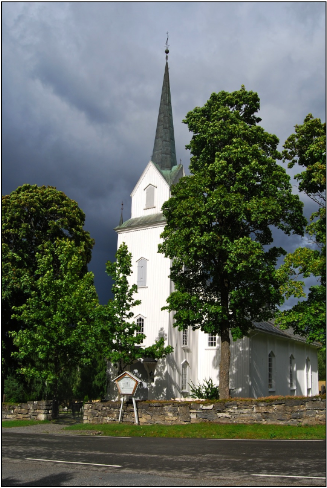At a time when the Norwegian Church has been offending and losing members, and church attendance in Oslo continues to decline, churches that cater to expatriates are thriving. Among them is the small St Edmund’s Church, which had a full program during the Easter holidays and attracts a loyal congregation.

“We’re an international church,” the Venerable Dr Brian Russell, who heads the Anglican Church in Norway, told newspaper Aftenposten. “Just in the church choir here in Oslo, folks are singing from 15 different countries.”
After 21 years of clerical duties for the Church of England in Birmingham, Russell is now serving 1,750 members of the Anglican Church in Norway, and was busy preparing this week for Holy Thursday and Easter Sunday services at St Edmunds. Good Friday services were due to be held in cooperation with the American Lutheran Church in Oslo’s Frogner district.
The demand is definitely there, just as it long has been at the few Catholic churches in Oslo that cater to overflow crowds every Sunday, not just at Easter. Immigrants from Poland and the Philippines, for example, along with those from British Commonwealth nations, the US and Africa are among the faithful who turn out for church services and find a “home away from home” where the liturgy and hymns are familiar and in their own language. Just as Muslim and Buddhist organizations have sought and built new mosques and temples in Norway, Catholic organizations have negotiated to take over underused or even closed Norwegian churches to serve immigrants seeking a sense of community in addition to religious inspiration.
The trend occurs just as new studies confirm a decline in attendance and membership in the Norwegian Church, which is largely funded by the state but has loosened its state ties considerably in recent years. Many Norwegians were literally born into the church, with baptismal certificates serving as birth certificates, and there was a time when more than 90 percent of Norway’s population belonged to the state evangelical Lutheran church. Aftenposten reported that today, only 55.2 percent of Oslo residents are church members. Many of them rarely if ever attend services, meaning that churches are closing or cutting back. The large state church at Majorstuen, for example, hopes to continue to offer at least a few Sunday services each month, but is prepared for forced reductions in its current offerings.
Reasons for the decline in Norwegian church membership and attendance vary, but church officials were bracing this month for a new defection following a controversial decision by the church’s national assembly to prevent homosexuals from marrying in the church. That offended thousands of hetero- and homosexuals alike, including a former government finance minister and deputy leader of the Conservative Party. This week, Norwegian Broadcasting (NRK) reported that church delegates were being branded as “cowards” for refusing to reveal how they voted on the matter. The Norwegian church suddenly became even less popular, and now is being forced in Oslo to merge congegrations and likely lease out more churches no longer in use to other religious organizations that need more space.

While the pews are empty at many Norwegian churches, St Edmunds in Oslo attracts as many as 80 people every Sunday to the small Anglican church that also regularly attracted Norway’s first modern queen, Maud, after she arrived in Norway in 1905. Queen Maud had been an English princess, never conversed comfortably in Norwegian and preferred the English liturgy at St Edmunds. So have many “expats” like her since the church opened in 1884.
St Edmunds also attracts some Norwegians, like Sigrid Kvaal, who studied in London in the 1970s and has attended St Edmunds since returning to Norway. She found the Anglican Church more tolerant and diverse than the Norwegian church: “Here you’ll find ambassadors and beggars, affluent business expats and poor students,” she told Aftenposten. Many take part in the choir and Bible studies, and send their children to Sunday School. “It’s a church that gathers British residents to important events like christenings, weddings and funerals, while we also try to mount a good artistic offering through organ concerts,” Kvaal said.
The Anglican Church in Norway also has active congregations in Stavanger, Bergen and Trondheim in addition to its summer church, St Olaf’s, in Balestrand. It was built in 1894 in memory of a British woman who married into the Kvikne hotel family and missed an English liturgy and psalms, even though she adapted well as wife of a hotel director when tourists first started visiting the Norwegian mountains and fjords.
newsinenglish.no/Nina Berglund

